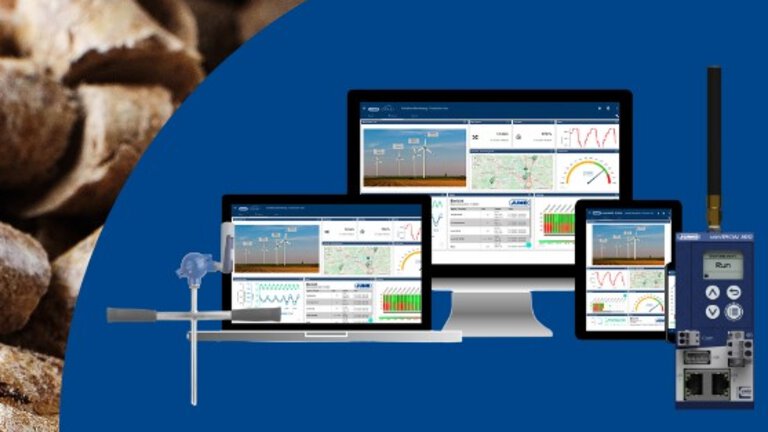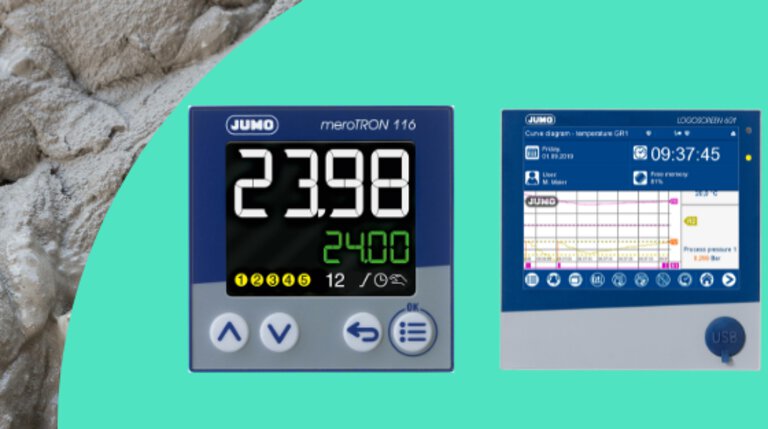
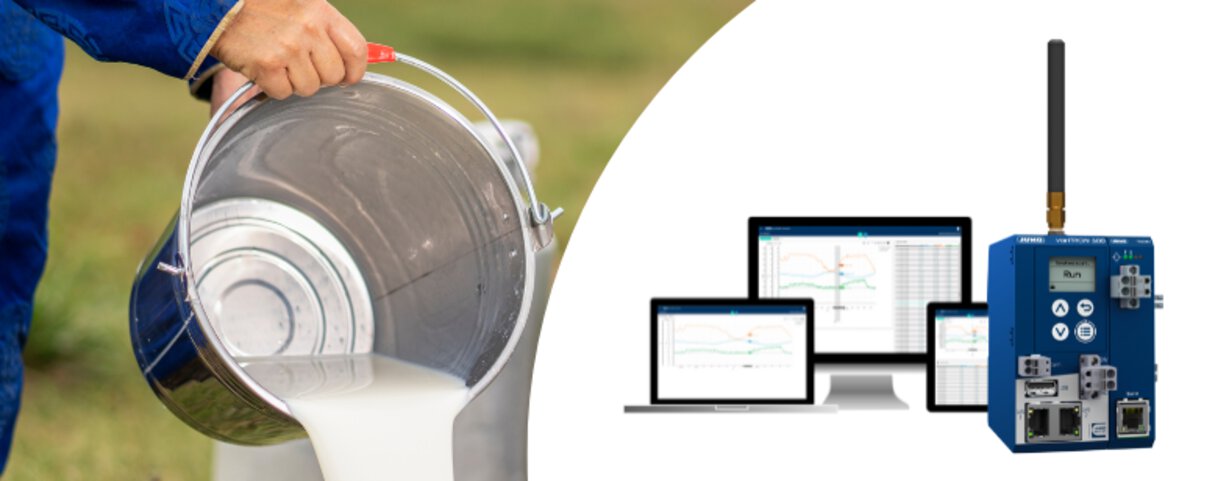
How to accurately measure temperature and humidity in a dairy plant? Case study
How to streamline temperature and humidity measurement in the dairy industry when the existing system relied on manual USB data download? This was the challenge faced by our client, a producer of milk, cheese and yogurt. In this article, we show how they were able to make a step-by-step transition to a modern, automated data collection and analysis system that has realistically relieved the burden on employees, improved process oversight, and ultimately positively impacted the quality of their dairy products. See how technology can solve the daily problems associated with manual supervision of environmental parameters. If your plant still lacks quick access to data, and measurement processes consume too much time and attention, it's a sign to think about a new solution - all it takes is a well-chosen automation system and thoughtful implementation. Read on!
How to ensure precise temperature and humidity control in a dairy plant without involving operators? The customer's problem
At our client's dairy plant, daily monitoring of process parameters was based on manual downloading of data from measuring devices via USB drives. This way of working involved the need for the operator to be physically present at the equipment, which in practice meant a waste of time and resources. Collecting data in this way was not only cumbersome, but also fraught with the risk of errors - both in the reading itself and when copying files.
What's more, manual data collection hindered quick access to historical information, which is crucial when analyzing the course of production processes, handling complaints or preparing for quality audits. The client expected a solution that would not only relieve employees of time-consuming tasks, but most importantly, improve control over the production environment. The main goal was to increase the accuracy of temperature and humidity measurements throughout the plant, with real-time access to the data and the possibility to analyze it centrally - without involving operators in repetitive and error-prone activities.
How to automate temperature and humidity measurement in a dairy plant? Our solution
Responding to the customer's needs, we implemented a solution based on the JUMO automation system, which enables unattended collection of measurement data and its analysis in real time. A key element was the integration of the JUMO variTRON 500 controller, which acts as a central unit and collects data from equipment distributed in different parts of the plant. With its open communication capabilities, the variTRON was connected to the existing infrastructure and enabled data transfer via Ethernet - eliminating the need for USB altogether.
The second pillar of the implementation was smartWARE Evaluation software as a data logger. It allows convenient monitoring of temperature and humidity, as well as generating statements and reports. The entire system was designed so that further expansion is possible - for example, by adding more measurement points or additional functions such as alarms, dashboards or remote access. The solution used fits the needs of a modern manufacturing plant, which relies on automation, transparency and data continuity.
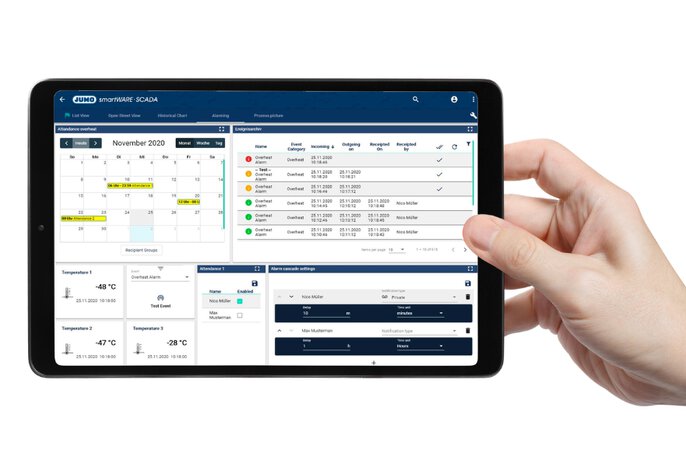
JUMO SmartWare SCADA software enables real-time monitoring of parameters.
What has the dairy gained from automating temperature and humidity measurement? Customer benefits
The introduction of an automatic temperature and humidity measurement system has brought noticeable changes to dairy production. First and foremost, the need for manual data retrieval, which previously occupied operators' time and required organizing cyclical activities, has been eliminated. With the new solution, data is collected automatically and is available in one place - with no delays, no copying of files and no risk of loss.
Automatic data collection = real time savings
Operators no longer have to perform repetitive tasks related to handling data carriers. Activities that previously involved employees have been replaced by a reliable network communication system. The process runs in the background - sensor data goes directly to the analytical system, without the need for human intervention.
Constant access to data has improved process oversight
Thanks to central access to information, the production and maintenance department has a full view of current temperature and humidity values. Monitoring takes place in real time, which makes it possible to immediately notice potential deviations from the norm and take corrective action more quickly. Such a change has translated into greater process stability and reduced risk of production losses.
Better organization of work, greater sense of control
The implementation of the system has not only improved access to data, but also relieved employees of additional duties. Data is always available, organized and ready for use - both in daily operations and during inspections or audits. This allows the production team to focus on optimizing the process instead of handling unnecessary bureaucracy.
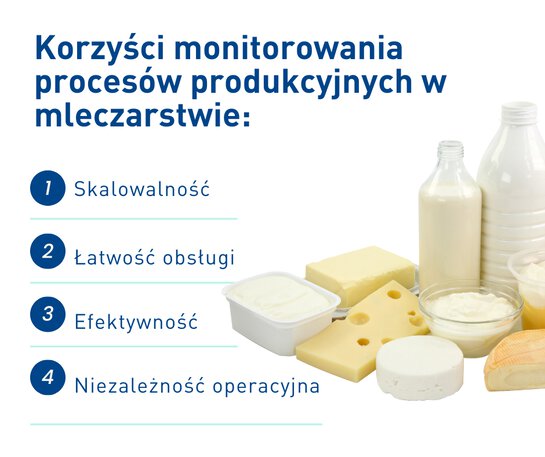
Real benefits for your facility. Check it out for yourself!
About the author
My name is Natalia and I specialize in content creation. I have been sculpting words professionally for three years as an editor and copywriter. My mission is to break down even the most complex issues. I focus on building relationships with the reader and creating experiences. Privately, a lover of travel, literature and fashion.

Technical specialist
Jakub Dąbrowski - Inside Sales Engineer +48882351471 Jakub.Dabrowski@JUMO.net +48882351471Comments
We encourage you to leave comments via the form below. They will be published online after they have been approved by our review process.

